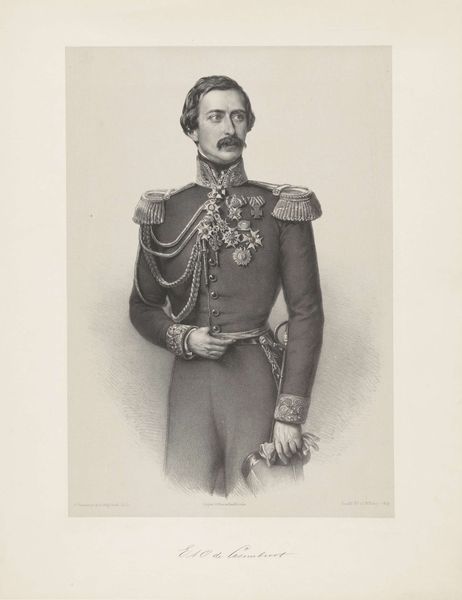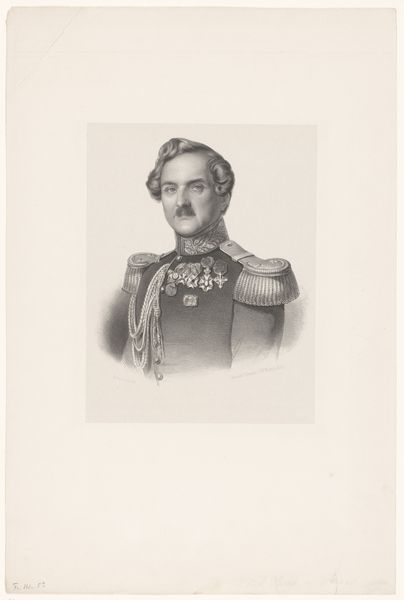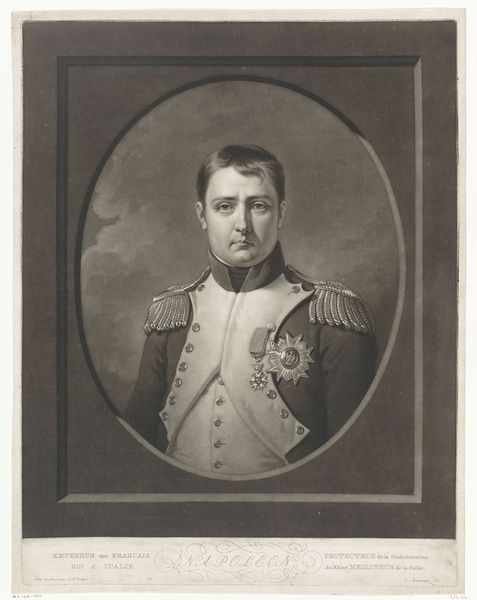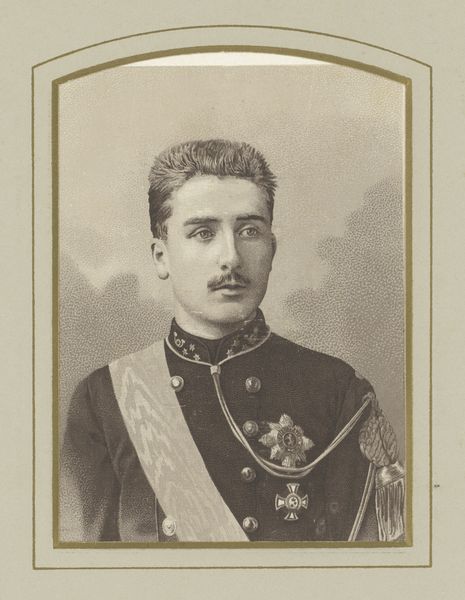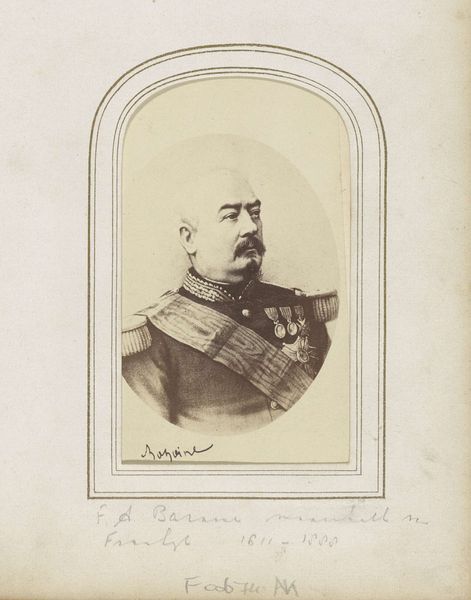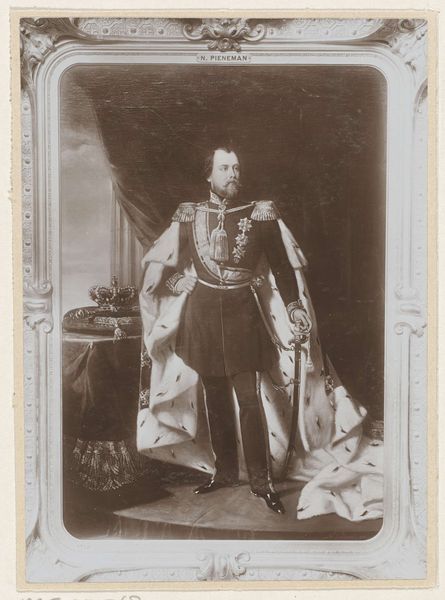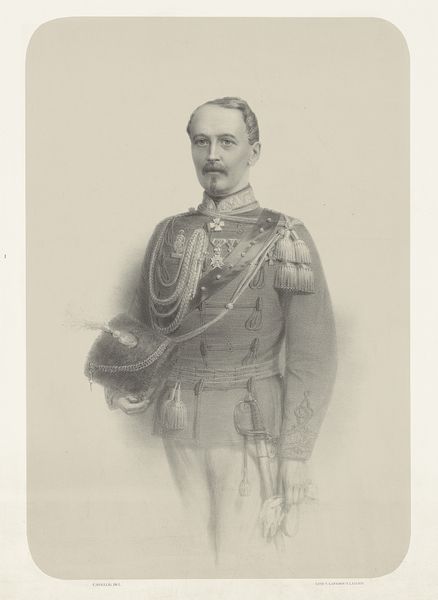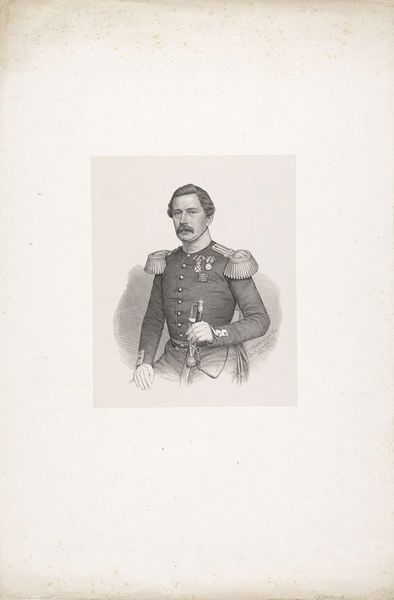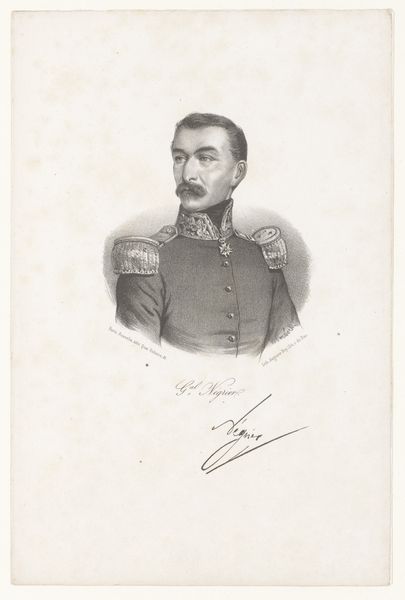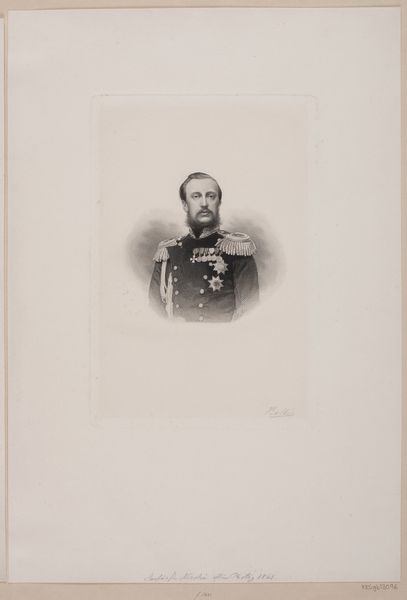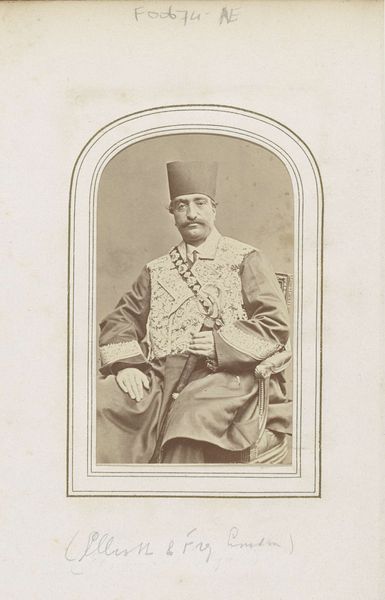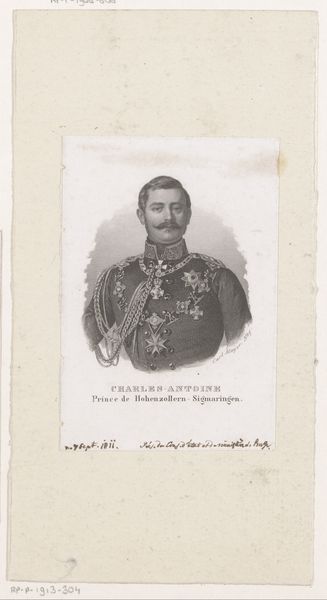
Fotoreproductie van een geschilderd portret van Mr. de Talode du Grail 1890 - 1910
0:00
0:00
#
wedding photograph
#
photo restoration
#
portrait image
#
film poster
#
historical photography
#
portrait reference
#
old-timey
#
framed image
#
19th century
#
statue
Dimensions: height 258 mm, width 214 mm, height 398 mm, width 300 mm
Copyright: Rijks Museum: Open Domain
Editor: We're looking at a photographic reproduction of a painted portrait of Mr. de Talode du Grail, created sometime between 1890 and 1910 by Michel Berthaud. The sepia tone gives it a timeless feel, but the composition is what really strikes me, especially how the oval portrait sits within a rectangular frame, and the sitter is encased in gleaming armor. What can you tell me about how its aesthetic components shape our perception of the image? Curator: Notice how the portrait utilizes varying shapes to create visual interest. The soft oval containing the subject’s face contrasts sharply with the linear architecture of his military dress and ornate frame. The layering of shapes draws your eye from macro to micro, face to clothing to frame. Note also that the composition emphasizes texture. Can you see the subtle tonal gradations across his face? Editor: Yes, I see what you mean. It’s almost as if the lighting is being used to sculpt the face. Curator: Exactly. Light plays an important role in revealing details. Examine the way light reflects off the armour. Berthoud is strategic with his deployment of tonal gradations. Observe how that strong contrast of light and shadow enhances the illusion of three-dimensionality. Do you perceive any thematic connection to his sartorial choices? Editor: His armor… Well, it immediately establishes his authority and perhaps even communicates some narrative of a stoic or reliable leader. Is there anything else I'm missing? Curator: Perhaps the intentional choice of the sitter being displayed this way—that such obvious employment of detail would serve the subject's social rank, importance or function within a structured society. Editor: I didn’t think about the details adding meaning! I was focused on the big picture. This was very enlightening! Curator: Indeed, attending to smaller elements can unlock profound dimensions of understanding within visual art.
Comments
No comments
Be the first to comment and join the conversation on the ultimate creative platform.

